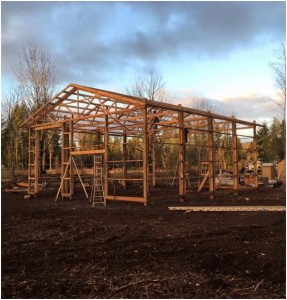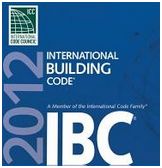Portions of the content for this post were courtesy of Charlie Wardell’s February 5, 2016 article in The Journal of Light Construction (JLC).
About 45% of residential field inspections result in a jobsite code violation. The majority of post frame (pole building) construction is residential or accessory to a residence, which makes this highly relevant.
 This is according to the Common Code Violations survey released in 2013 by the International Code Council (ICC – they write the Building Codes) and the National Association of Homebuilders (NAHB). Researchers polled code officials across the U.S. about the items most likely to be flagged during construction. The survey found overall compliance improving. Although inspectors are flagging a few specific items—most notably guardrails and stairs—more often than in the past, in general they reported far fewer failed inspections than in a similar survey published in 2006.
This is according to the Common Code Violations survey released in 2013 by the International Code Council (ICC – they write the Building Codes) and the National Association of Homebuilders (NAHB). Researchers polled code officials across the U.S. about the items most likely to be flagged during construction. The survey found overall compliance improving. Although inspectors are flagging a few specific items—most notably guardrails and stairs—more often than in the past, in general they reported far fewer failed inspections than in a similar survey published in 2006.
Competitive pressures have certainly contributed to this improvement; failed inspections and re-do’s cost time and money. But state-mandated contractor training has also played a role. “The educational requirements for licensing have helped a lot,” Vaughn Wicker, ICC’s vice president of government relations, said. “A lot of states now require training to get or keep a license, so builders in general have better code knowledge than in the past.”
But even though things are getting better, 45% is still a big number, leaving plenty of room for improvement. With this in mind, JLC looked at published lists of the top code violations from various municipalities across the country and contacted building inspectors to find out what items have been giving builders the most trouble. Our findings confirmed those of the ICC and NAHB researchers.
Here is a list of the most common reasons a builder (or Do-It-Yourselfer) will fail inspection. Paying extra attention to them should make for fewer items which need correction.
Missing Documentation
The most common reason for a failed inspection is the simplest (and least expensive) to remedy: not having all the required documents on site. This was at the top of nearly every municipal list we looked at and cited by every code official we contacted.
“The first thing I look for is the documentation,” Glenn Mathewson, a Westminster, Colo. building official and a regular JLC contributor, said. “If I show up and they don’t have the plans I need for that inspection, then there’s no hope of passing.” In his city, this includes an engineer’s soils report, the structural plans and the truss drawings. These documents will, of course, vary by jurisdiction, but it’s up to the builder to know what they are and to have them available.
Darryl Byle, a former building inspector and structural engineer from Kalispell, Mont., said his city came up with a quick fix for the problem: The building department decided to put a stop work order on any project where the drawings weren’t on site. “That got the drawings on site pretty fast,” he said.
Braced (Sheer) Wall Errors
The problem Mathewson sees most often—overdriven nails in shear wall bracing panels—can take a bit more work to correct. “If you overdrive a nail, you can reduce the strength of a 7/16-inch panel to that of a 3/8-inch or 1/4-inch panel,” he said. (As an aside, he pointed out this is a problem with nailing off hangers as well. Overdriving a nail dimples the steel, causing it to lose strength.)








